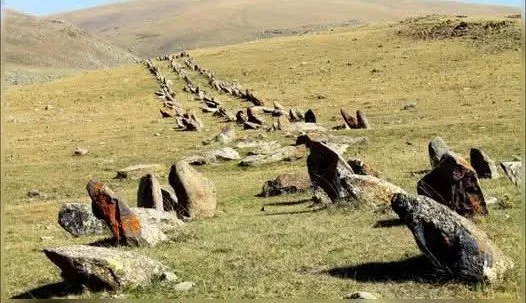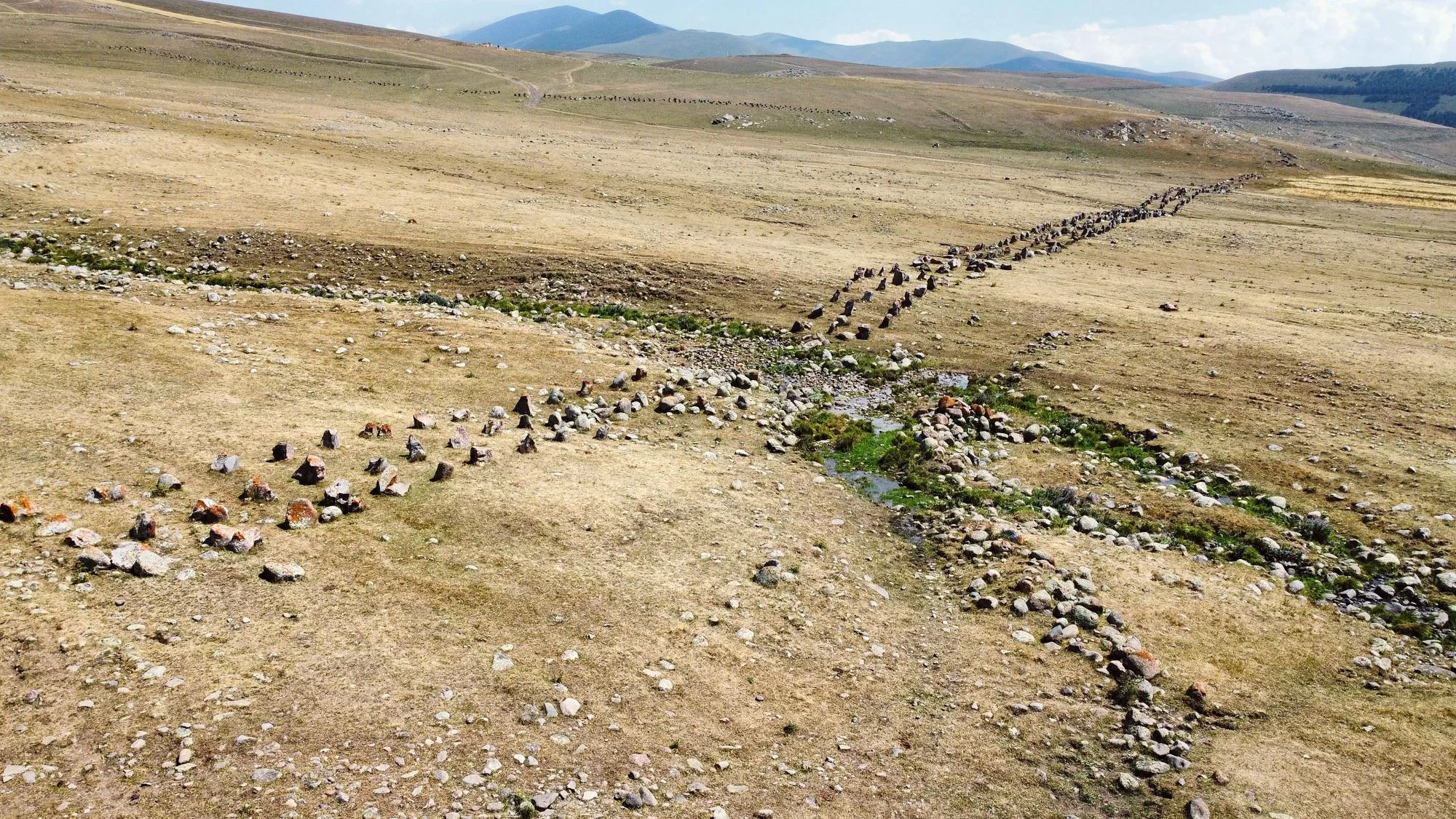Hartashen Megalithic Avenue: Armenia’s Enigmatic Ancient Wonder

Tucked away in the remote, rugged terrain of Armenia’s Shirak Province, the Hartashen Megalithic Avenue stands as one of the world’s most overlooked archaeological treasures. Estimated to be 6,000 to 8,000 years old, this prehistoric monument consists of two non-intersecting avenues of towering basalt monoliths, each arranged in three parallel rows stretching over 500 meters across a high plateau. With 760 preserved steles—possibly up to 1,200 originally—this site hints at a sophisticated ancient civilization, yet its true purpose remains shrouded in mystery.
A Monument of Ancient Ingenuity
Discovered in the 1970s by Soviet archaeologists, the Hartashen Megalithic Avenue is a striking complex of menhirs, some reaching heights of 6 meters (20 feet). The stones, meticulously placed at angles, form two distinct avenues that do not intersect, suggesting a deliberate and complex design. Located at an altitude of 2,060 meters above sea level, the site’s remote location and harsh landscape have preserved it largely unchanged for millennia, save for occasional wheat fields and dirt roads.
The sheer scale of the monument, with its estimated 1,200 original steles, indicates significant engineering prowess. Transporting, shaping, and erecting these massive basalt stones would have required advanced tools, organized labor, and a deep understanding of spatial organization. The flat area between the avenues is believed to conceal an unexcavated funerary monument, hinting at a possible ritual or ceremonial function.

Theories of Purpose: From Observatories to Ceremonial Paths
The purpose of Hartashen remains a subject of intense speculation due to limited excavation and study. Several theories have emerged, each offering a glimpse into the possible lives of its Neolithic or Bronze Age builders:
- Astronomical Observatory: The precise alignment of the monoliths suggests they may have been used to track celestial events, such as solstices, equinoxes, or lunar movements. Similar to Stonehenge or Armenia’s own Zorats Karer (Carahunge), often called the “Armenian Stonehenge,” Hartashen’s stones could have served as markers for agricultural or ceremonial calendars critical to ancient communities.
- Ceremonial Pathway: The avenues’ layout evokes the possibility of a sacred processional route, where rituals or communal gatherings took place. The stones may have symbolized spiritual connections between the earth and the cosmos, a common feature in megalithic cultures.
- Practical Functions: Some propose the site served as a trade route or waystation, given its proximity to natural springs and waterways. Others suggest the stones acted as hunting barriers or funnels, though the large gaps between them make this less likely.
- Funerary Site: The unexcavated area between the avenues may contain burial structures, suggesting Hartashen was a place of ancestral worship or commemoration, a common feature of megalithic sites.

Despite these theories, the lack of extensive archaeological work leaves Hartashen’s purpose uncertain. Earlier claims that the site was a World War II anti-tank defense have been largely dismissed, with recent research favoring a Neolithic or Bronze Age origin, potentially sharing a cultural context with the Carnac stones in France.
A Forgotten Gem in the Armenian Highlands
Hartashen’s obscurity stems from its remote location, limited funding, and minimal global archaeological attention. Unlike famous megalithic sites like Stonehenge or Göbekli Tepe, Hartashen has not captured mainstream fascination, yet its age and complexity place it among the world’s oldest known monumental structures, predating the Great Pyramids of Egypt.
Armenia, often described as an open-air museum, is rich with ancient sites like Zorats Karer, the Areni-1 Cave (home to the world’s oldest known winery), and petroglyphs at Mount Ukhtasar. Hartashen fits seamlessly into this tapestry, reflecting the region’s role as a cradle of early human innovation along ancient migration routes from Anatolia and the Near East.
The Future of Hartashen
Recent expeditions, such as one in 2021 by the Byurakan Observatory and the National University of Architecture and Construction of Armenia, have begun to measure and document the site, but much remains unexcavated. The stones may hold inscriptions or markings, and the surrounding landscape could conceal artifacts or structures that reveal more about the builders’ culture. Advances in technology and increased resources could unlock these secrets, potentially reshaping our understanding of Neolithic societies in the Caucasus.
Hartashen’s towering monoliths stand as silent sentinels, guarding the stories of a lost civilization. As archaeologists and adventurers continue to explore this forgotten wonder, it promises to illuminate the ingenuity, rituals, and cosmic connections of our ancient ancestors, inviting us to rethink the depth of human history in the Armenian Highlands.


